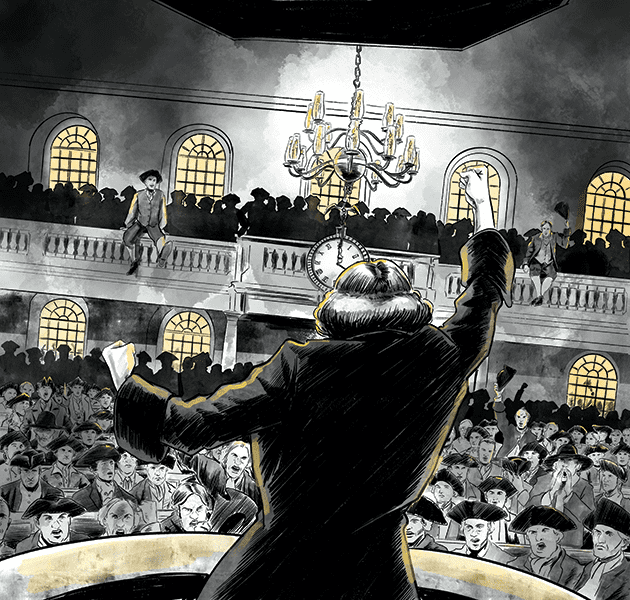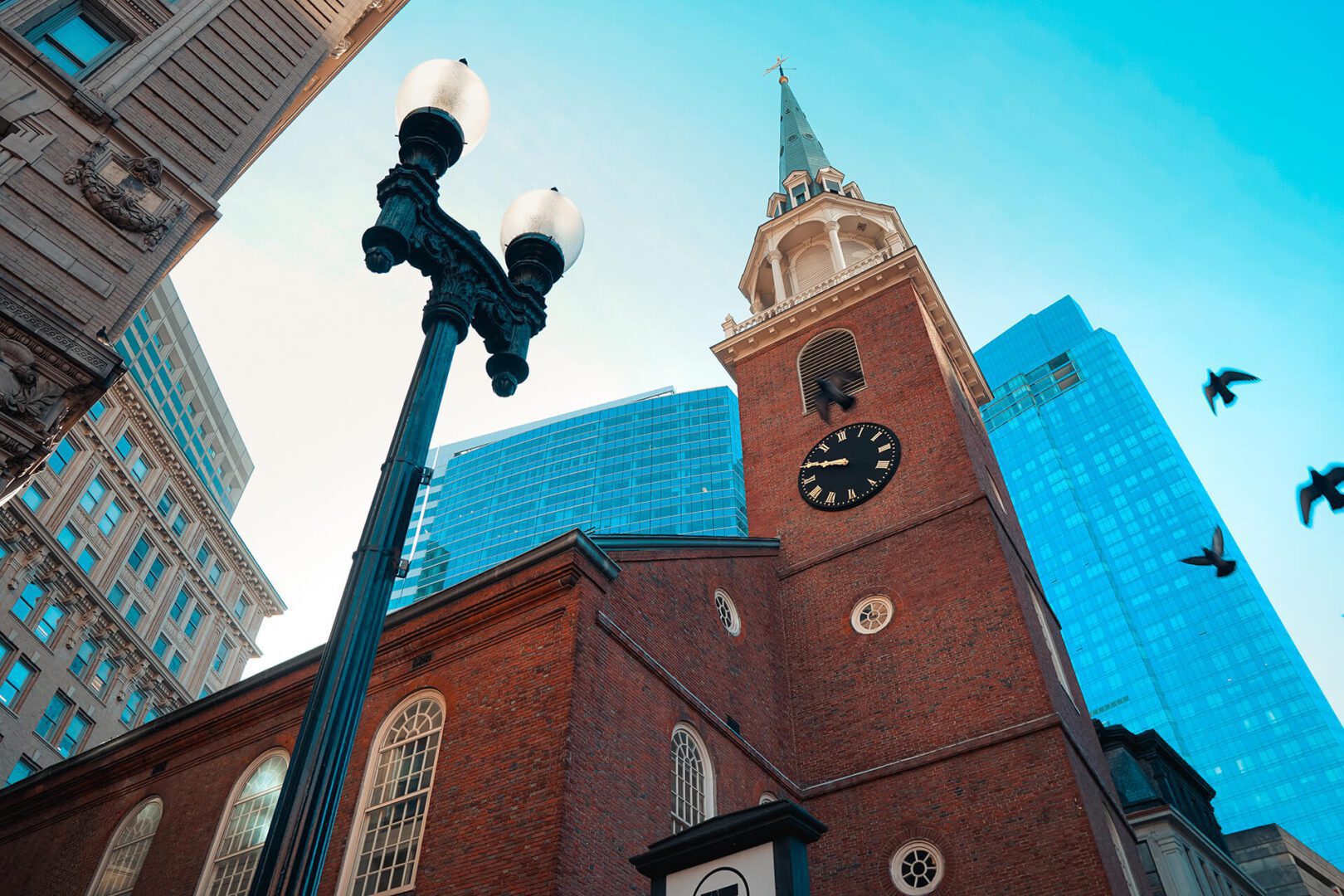Old South Meeting House
Where the Boston Tea Party Began
Built in 1729, the Old South Meeting House was one of the largest buildings in colonial Boston, making it an ideal location for some of the most important mass meetings prior to the American Revolution. In the aftermath of the Boston Massacre in 1770, Old South Meeting House was used as the site for a large meeting that successfully demanded the removal of British soldiers who had been occupying the town for 18 months. In 1773, Old South hosted a number of meetings about what to do with East India Company tea sitting in Boston Harbor waiting to be unloaded and taxed. On December 16, 1773, the final meeting at Old South Meeting House would serve as the start of the Boston Tea Party.
The Old South Meeting House has been an important place of public gathering, worship, and debate for nearly three centuries. Throughout its history, the Main Hall has echoed with the words of political organizers, ministers, and civic leaders. Today, the Old South Meeting House hosts thought-provoking exhibits, engaging public and educational programs, and an array of private events. Situated at the corner of Washington Street and Milk Street, the Old South Meeting House is a National Historic Landmark and a site within the Boston National Historical Park on the Freedom Trail. It is the oldest private preservation project in New England and the second oldest in the United States, sparking the “saving” of American history sites nationwide.
Take 3D tour of the Old South Meeting House, including areas of the building that are not accessible to the public. Start exploring!






